In the Streets of NYC:
If All You Do Is Watch The News or Social Media, You Have No Idea What's Going On
November 27, 2014 | Revolution Newspaper | revcom.us
Revcom.us/Revolution spoke with Sunsara Taylor about her observations on the mood and scene in the midst of the protest in New York City on November 25 against the outrageous grand jury decision not to charge the cop who murdered Michael Brown.
Revolution: Tell us what it was like in the streets with protesters on Tuesday night in New York City.
Sunsara Taylor: Tons of people had never been to a protest before. Teenagers. Every nationality. There was so much raw emotion—people with tremendous joy at being together, in the streets, seeing they are not alone. And tremendous heartbreak—the visceral pain of Mike Brown's parents, and of so many who have lost their children to police murder. And tremendous anger, deep anger. People were speaking out about horrendous experience at hands of police. People were shaking with anger.
There was such depth of sentiment, such breadth of sentiment. People would join the march on the spot. People on the sides and in the stores would throw their hands up, "Hands up don't shoot!" Traffic was snarled up across the city. People in cars were going nowhere. I've been in protests where traffic is blocked. Often some drivers take heart in seeing people protesting. But I've never seen such support from people in cars. People, especially Black people, with their fists out of cars, people grabbing the hands of people walking by, clasping their hands and holding on, not letting go, just deeply connecting and embracing the protesters.
Revolution: And for readers outside of New York City, you have to appreciate what an amazing thing that is—this is a city where people will honk if you slow down to let someone cross the street. Can you give a picture of who was in the protest?
Sunsara Taylor: You know, it's not that often that there are this many young Black men who are not students at protests.
Revolution: Partly that is due to the fact that so many young Black men are on parole or probation. And there are other things that make it difficult for them to step out in protests.
Sunsara Taylor: Exactly, but there were significant numbers of young Black men from the communities, along with Black women. And at the same time there were a lot more white people than came out for a lot of the Trayvon Martin protests—after he was murdered by a white racist and the system let his killer off. So, there was an interesting scene of both more Black people, and more white people. Not just activists. And then all kinds of people, immigrants, Latinos, South Asians, and others.
There were religious people. College students. People who came by themselves, and clusters who you could watch become friends and run together for hours. There were a lot of young Latinos. It was beautiful. People felt really together. And a lot of people who greeted revolutionary agitation with hugs and tears. I mean literally, people responding to a revolutionary message in that way.
At one point we marched past a shelter of homeless youth, and you could see them in the window of the cafeteria. Three youths outside having cigarettes, and they just started dancing. Then we looked inside and people were dancing in the cafeteria with their hands up like Mike Brown! Bus drivers were honking horns, and people were jumping in the buses. It was dark out, and the inside of the buses were lit up, so you could see people dancing inside. It was like this everywhere. There is just such depth of outrage, and so much joy at seeing this defiance in the streets. I've never seen anything like this.
Revolution: And this all seems like it was expressed in the courage, and endurance, of the marches!
Sunsara Taylor: We were with a march with 500 or a thousand people by the time we left Union Square. We marched to the Lincoln Tunnel from NYC to New Jersey and blocked the entrance to that tunnel for a while. Then we marched to Times Square and cops attacked the march with pepper spray and brutally arrested some people. People went running in every direction. But then people came back—regrouping, chanting, agitating, reminding people why we were there.
We heard there were people on the FDR Highway shutting it down, and so we all the way over the east side. Some people made it onto the FDR, but the police cut most of us off. So we've got this huge crowd still marching. Everybody's tired but nobody's tired. We're wishing we had gotten up on the FDR but we're thinking, actually it's better. Now there are two huge marches, the city is being even more disrupted. At this point we've been marching for hours and come at least five or six miles together (by the end of the night, some people marched well over 13 miles). Then, all of a sudden, when we get past 5th Avenue, we run smack into another entire march coming from the other direction. It was so beautiful! We told them, "We're marching to the West Side Highway," but they said, "We already took over the West Side Highway. We're marching to Times Square." And we said, "We already took over Times Square." Then we figured together that Times Square is the heart of the city, so we all headed back there together, now twice as strong.
People were feeding off the energy of each other, of running into more marches, of the continuous depth of response from everyone on the sides. Feeling it in their hearts, showing it in their faces, dancing, and tears. It was raw.
And the message of revolution connected very deeply. After I spoke at one point, a 25-year-old Black man came up with tears in his eyes and just reached out and hugged me. He said he's been protesting for years, "I can't take this any more, this is too much." I said, it's time to get down with the revolution. And he said that's what he wanted to do. That's why he came up. He was not the only one like that. This is a moment when a lot of people need to make big leaps—getting all the way out there fighting the power and getting all the way down with the only solution: real communist revolution.
Revolution: What you are describing is like a day-and-night opposite of what is being portrayed in the news, which is that people in Ferguson got angry and their expressions of that anger turned everyone off, and not much else is happening.
Sunsara Taylor: If all you do is watch the news or even social media, you have no idea what's going on. We were calling people up saying get out here. Over and over young people I spoke to brought up that they had spent Monday night on Facebook and had to "unfriend" all kinds of people who are saying stupid, or outright racist, shit. They were so upset. I was like, "Get off Facebook and get out here in the streets! Be where it matters and don't be alone." Sure, all that cynicism on Facebook is real, all that snarkiness. All that stuff on TV about the big concern is "protester violence." Yes, that is having some effect. But the big concern that millions are really agonizing over, and that you could feel just boiling up when you were in the street out there in real life with real people was: "They're killing our youth and this has to stop!"
It is worth noting, the thing that got the most visceral response on the street was when we would go at all this bullshit being heaped on the people of Ferguson in the media. We would agitate: Stop changing the subject! The subject is not property destruction, the subject is genocide against Black people—in the prisons, on the streets, at the hands of the police, and green-lighted by their courts, their media, their juries, and their commander-in-chief. You want to talk about violence, let's talk about the thugs in blue who are killing our youth. Let's talk about the tear gas and tanks their system sends in against our protests. Let's talk about stop-and-frisk and police tasers and police beating people down on the side of the road. Let's talk about all the parents who have to bury their children. Let's talk about slavery, about Jim Crow, lynchings, mass incarceration, Sean Bell, Michael Brown, Aiyana Jones, Rekia Boyd, Oscar Grant, Amadou Diallo, Malcolm Ferguson, Nicholas Heyward Jr., Tyisha Miller, Tamir Rice, and on and on and on and on.
I am not saying that no one is being swayed by what the media is saying, or by the various so-called leaders trying to calm people down. But, when this bullshit was called out, this is what got the deepest response, the loudest response, the most defiant and militant and heads-high-righteously-furious response.
Revolution: Let's get back to what was motivating people.
Sunsara Taylor: The system was just shoving people's face in the wanton disregard for Black lives. And in response, there's a new feeling. In some ways it is inchoate, but it has been building throughout the past days.
Revolution: How do you assess the relationship between the determination of people in Ferguson to not let this go down, and the mood in the street where you were?
Sunsara Taylor: The defiance in Ferguson was why there was such a breadth of protest. The determination to not go along silently—people saw that in Ferguson. And then also there is the work of revolutionaries who are showing that the future can be different, that are showing how what we're doing right now matters.
People were so traumatized by the decision, particularly Black folks. I spoke to folks who came out Monday night and said they just walked, they were too traumatized to even chant. By Tuesday night, the anger and strength and determination was more and more coming to the surface—this was affected by Ferguson's reaction Monday night, as well as by being out there together.
Revolution: So it is not like they put out on TV, that the Ferguson uprising turned everyone off.
Sunsara Taylor: Right. And then, the more sharply we contrasted the real horrific genocidal oppressive violence of this system with how correct it is for people to stand up, the more sharply we spoke to that, the more deeply people responded. The more strength they sent back, the more anger, and righteousness and jubilation.
Revolution: So this is a moment to seize.
Sunsara Taylor: This is a tremendous moment we are in. And for revolutionaries, for everyone who is sick in their hearts of this murder of our youth, who doesn't want to have to watch another parent cry out with the agony we see from Mike Brown's parents, just like so many more before them, who doesn't want to live even one more minute like this—we cannot be satisfied with even some very powerful protests and some very powerful nights of righteous rage. This has to go much deeper and much wider. People who were just going about their "regular lives" a few days ago have to step in and become fighters and leaders. And people who know the way out—revolutionaries and communists—have to step up and lead on a whole other level. We must be out there going through this with people and at the same time bringing answers, giving people the bigger picture, and organizing them into the revolution.
Hundreds of years of so-called "progress" and this is the best the system can do? It's time for something else. The Revolutionary Communist Party knows the way out. This Party has the strategy, it has the leadership, and it has the vision for a whole new society and world. Bob Avakian, the leader of this Party, has been at this for fifty years and has made breakthroughs so that we don't have to keep living this way. Really, you know what it means that we have a strategy for revolution?! You know what it means to have a leader like this and a party like this? We need to bring this to people. People need to know about Bob Avakian—they need to get into the historic Dialogue he just had with Cornel West. They need to know there is a way out, and they need to know there is a place for them in this movement for revolution. This is the ONLY way out.
Years from now, people need to look back on this—the murder of Mike Brown and the system's refusal to even indict killer cop once again—as a moment when people on the bottom who catch hell every day were joined by millions throughout society to stand up and bring this killing to a halt! And when the question of real revolution got put on the map for everyone to deal with and whole waves of people got down with this revolution, joined the Revolution Clubs and joined the Party. This needs to be a moment when things take a big leap closer towards being ready to go all out to wage and win a real revolution at the soonest possible time. There is an appetite for this right now very broadly and we have to act on that.
Volunteers Needed... for revcom.us and Revolution
If you like this article, subscribe, donate to and sustain Revolution newspaper.

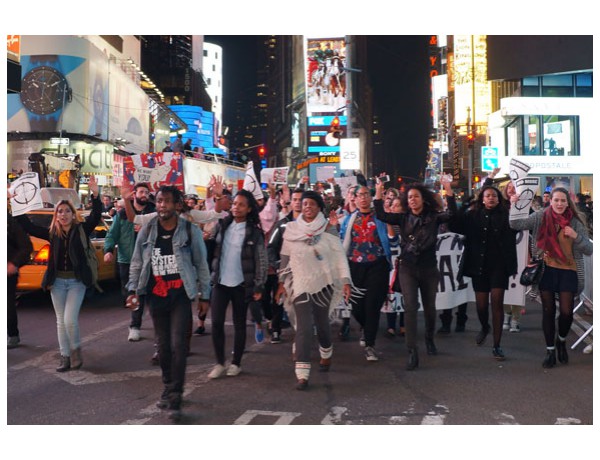
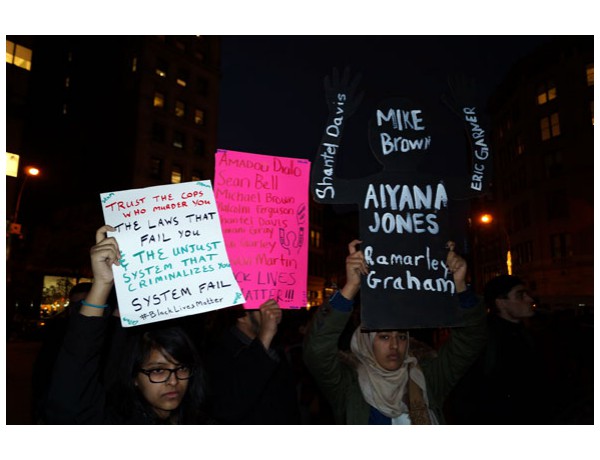
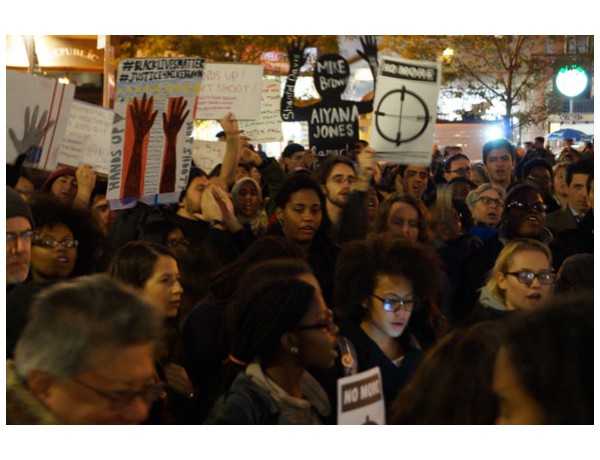
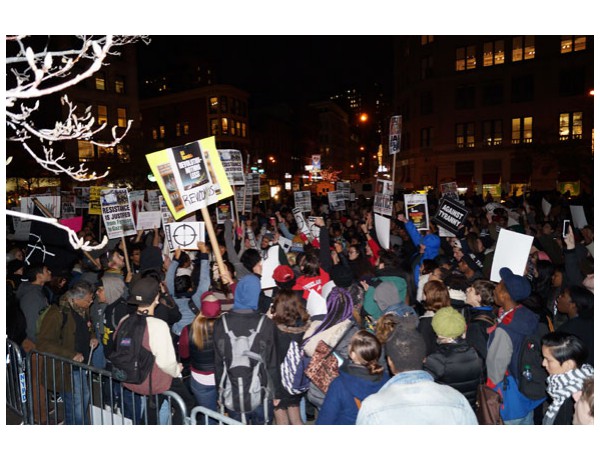
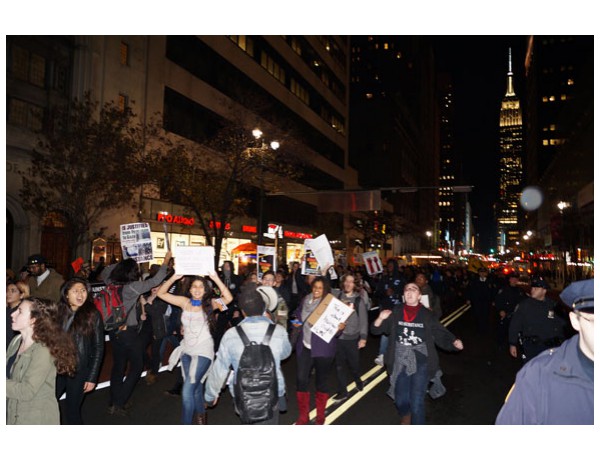
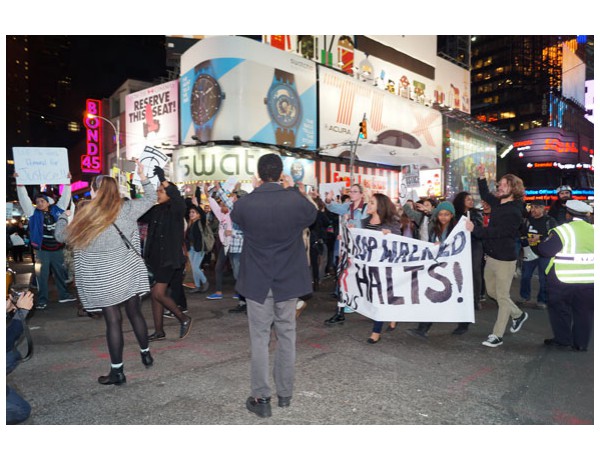
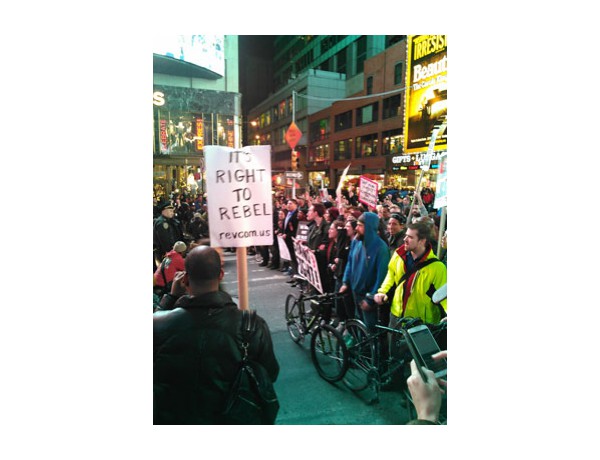
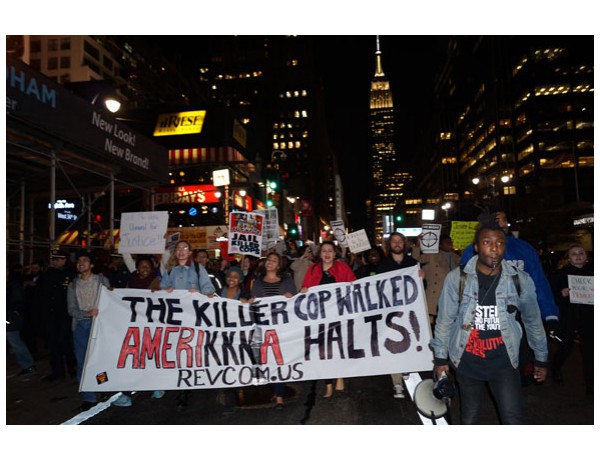
 1
1 2
2 3
3 4
4 5
5 6
6 7
7 8
8